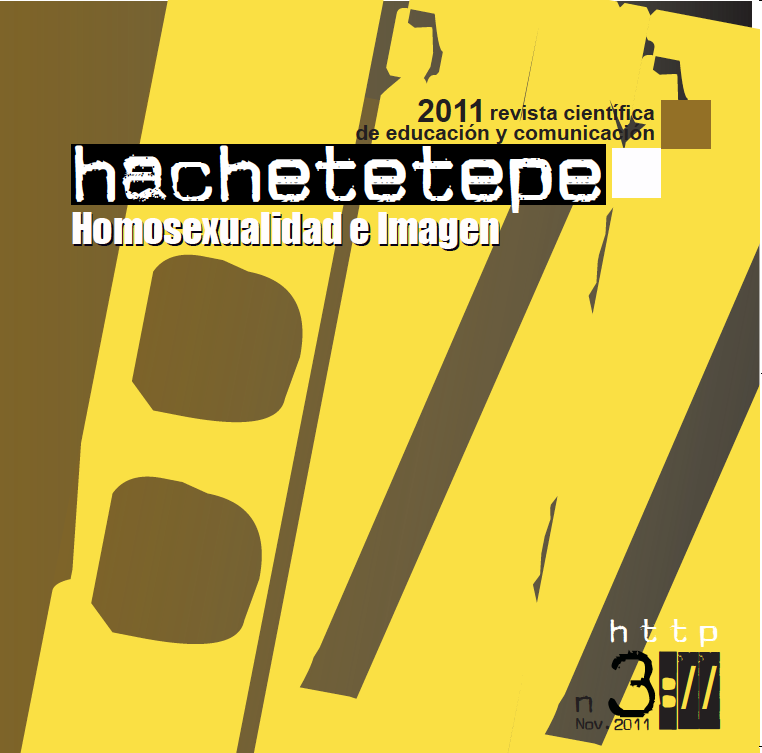Political practicea and nostalgia: Derek Jarman; Pier Paolo Pasolini; subversión and cinema; cinema and homosexuality.

Info
Abstract
Derek Jarman and Pier Paolo Pasolini deserve a special place in the history of cinema. Open homosexuals, their opus displays a common thread of nostalgia that explores history and the past; in the case of Jarman, we can talk about the inheritance from the Elizabethan era, while Pasolini is influenced by the classics and western mythology. Both use subversive techniques to write against conventional narrative structures and distance themselves from the stereotypes reproduced by other homosexual directors.
Keywords
Downloads
How to Cite
License

This work is licensed under a Creative Commons Attribution-NonCommercial-NoDerivatives 4.0 International License.
Those authors who have published with this journal, accept the following terms:
- They will retain their copyright and guarantee the journal the right to first publication of their work, which will simultaneously be subject to the Creative Commons Attribution License . They may be copied, used, disseminated, transmitted and publicly displayed, provided that the authorship, url, and magazine are cited, and are not used for commercial purposes. No derivative works are allowed.
- They may adopt other non-exclusive license agreements for the distribution of the published version of the work (e.g., deposit it in an institutional telematic archive or publish it in a monographic volume) provided that the initial publication in this journal is indicated.
- Disseminate your work through the Internet (e.g., in institutional telematic archives or on your website) once the manuscript is accepted, which may lead to interesting exchanges and increased citations of the published work. (See The effect of open access).
Hachetetepé. Scientific journal of education and communication does not charge a fee for the submission of manuscripts or for the publication of its articles.
References
Deleuze, G. (1994). La imagen-movimiento. Estudios sobre el cine, vol. 1. Barcelona: Paidós.
Dillon, S. (2004). Derek Jarman and Lyric film: the mirror and the sea. Austin: University of Texas Press.
Greene, N. (1990). Pier Paolo Pasolini. Cinema as Heresy. Princeton/Nueva Jersey: Princeton University Press.
Hanson, Ellis (Ed.) (1999). Out Takes: Essays on Queer theory and film. Duke of University Press.
Jarman, D. (1992). At Your Own Risk: A Saint’s Testament. Londres: Hutchinson.
Joubert-Laurencin, H. (1995). Pasolini. Portrait du poète en cinéaste. París: Cahiers du Cinéma.
Mariniello, S. (1999). Pier Paolo Pasolini. Madrid: Cátedra.
Meyler, M. Q. “Opposing Heterosoc: Jarman's Counter-Hegemonic Activism¨, en Lippard, C. (1996). By Angels Driven: the films of Derek Jarman, ed. Chis Lippard, Londres: Greenwood Press.
Pasolini, P.P. (1981). El caos. Contra el terror. Barcelona: Grijalbo,
Pasolini, P.P. (1978). Escritos corsarios. Barcelona: Monte Ávila Editores,
Pasolini, P.P. (1972). Empirismo erético. Milán: Garzanti.
Peake, T. (2000). Derek Jarman: a biography. Nueva York: The Overlook Press.
Rodríguez, A. (2011). Nostalgia de la rosa: Elegía y añoranza en el cine de Derek Jarman. Tesis para obtener el grado de Maestría. Centro Universitario de Arquitectura, Arte y Diseño, Universidad de Guadalajara (México).
Scarpetta, G. (1985). L´impureté. París: Grasset.
Yates, F. A. (1966). The Art of Memoria. Chicago: University of Chicago Press.

